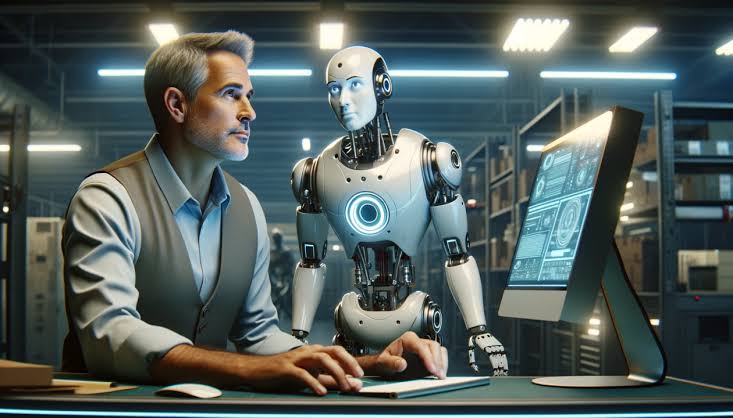In the realm of technology Robotics and Artificial Intelligence (AI) stand at forefront of innovation. They promise to reshape industries, enhance productivity and redefine human-machine interactions. These fields often intertwined yet distinct in their approaches, represent culmination of decades of research and development. The goal: creating intelligent machines capable of autonomous decision-making. They learn from their environments and perform complex tasks with precision and efficiency.
At its core robotics involves the design construction and operation of robots. Mechanical devices programmed to execute tasks autonomously or semi-autonomously. Robots are equipped with sensors, actuators and often artificial intelligence. These capabilities allow them to perceive their surroundings. Make decisions and interact with environment or humans. AI focuses on creating systems or algorithms. These can perform tasks typically requiring human intelligence such as learning, reasoning problem-solving and natural language processing.
Recent advancements in AI particularly in machine learning and deep learning have catalyzed significant progress in robotics. These technologies enable robots to adapt to changing conditions. They learn from experience. They optimize performance over time—characteristics essential for applications ranging from industrial automation to healthcare and space exploration.
Applications of Robotics and AI Across Industries
The integration of robotics and AI has revolutionized various industries, enhancing efficiency, safety, and scalability:
Manufacturing and Industrial Automation: Robots equipped with AI-powered vision systems and machine learning algorithms automate repetitive tasks, assembly processes, and quality control, thereby improving production speed, accuracy, and worker safety.
Healthcare and Medical Robotics: Surgical robots, guided by AI algorithms, assist surgeons in performing delicate procedures with enhanced precision and minimal invasiveness. AI-powered diagnostics systems analyze medical images and patient data to aid in early disease detection and treatment planning.
Autonomous Vehicles and Transportation: AI-enabled autonomous vehicles, from self-driving cars to delivery drones, rely on robotics and machine learning to navigate roads, avoid obstacles, and ensure passenger safety. These advancements promise to transform transportation systems, reducing accidents and congestion while improving mobility.
Agriculture and AgTech: Agricultural robots equipped with AI capabilities monitor crop health, automate planting and harvesting processes, and optimize resource usage based on environmental data. These technologies contribute to sustainable farming practices and increased food production to meet global demand.
Space Exploration and Robotics: Robots equipped with AI capabilities play crucial roles in space missions, autonomously exploring planetary surfaces, conducting scientific experiments, and assembling structures in space. These advancements pave the way for future space exploration and colonization efforts.
Challenges and Considerations in Robotics and AI Development
Despite their transformative potential, robotics and AI face several challenges that require careful consideration and research:
Safety and Reliability: Ensuring the safety and reliability of AI-powered robots in complex and dynamic environments remains a critical concern. Robust testing, validation processes, and fail-safe mechanisms are essential to mitigate risks and prevent accidents.
Ethical and Social Implications: The integration of AI in robotics raises ethical questions related to job displacement, privacy concerns, and the ethical use of autonomous systems in decision-making processes. Addressing these concerns requires interdisciplinary collaboration and ethical frameworks to guide responsible AI deployment.
Interdisciplinary Collaboration and Research: Advancing robotics and AI necessitates collaboration across disciplines such as computer science, engineering, neuroscience, and ethics. Multidisciplinary research efforts are essential to tackle complex challenges and unlock new opportunities for innovation.
Education and Workforce Development: Developing AI expertise and robotics skills among the workforce is crucial to harnessing the full potential of these technologies. Educational initiatives, training programs, and lifelong learning opportunities are essential to prepare individuals for roles in the evolving landscape of robotics and AI.
Future Directions and Emerging Trends in Robotics and AI
Looking ahead, several emerging trends are poised to shape the future of robotics and AI:
Human-Robot Collaboration: Advances in collaborative robotics (cobots) aim to create safe and intuitive interactions between humans and robots in shared workspaces, enhancing productivity and flexibility in manufacturing and service industries.
Explainable AI and Trustworthiness: Enhancing transparency and interpretability of AI algorithms is critical for building trust and facilitating adoption across industries. Explainable AI techniques enable humans to understand how AI systems make decisions, thereby enhancing accountability and ethical practices.
Autonomous Systems and Reinforcement Learning: Integrating reinforcement learning techniques enables robots to learn through trial and error, adapting their behavior based on feedback from the environment. Autonomous systems equipped with reinforcement learning capabilities promise to revolutionize applications in robotics, gaming, and beyond.
Ethical AI and Responsible Innovation: Promoting ethical AI principles and responsible innovation frameworks is essential to address societal concerns and ensure the equitable deployment of robotics and AI technologies. Initiatives focused on fairness, accountability, and transparency (FAIR) aim to mitigate bias and promote inclusivity in AI-driven systems.
Conclusion
In conclusion, Robotics and Artificial Intelligence represent the next frontier of technological advancement, ushering in a new era of intelligent machines capable of augmenting human capabilities and transforming industries. From manufacturing and healthcare to transportation and space exploration, the integration of robotics and AI promises to revolutionize how we live, work, and interact with our increasingly complex world. As researchers, engineers, and policymakers navigate the challenges and opportunities ahead, collaboration and ethical considerations will be paramount in shaping a future where robotics and AI contribute positively to society's well-being and sustainable development.
